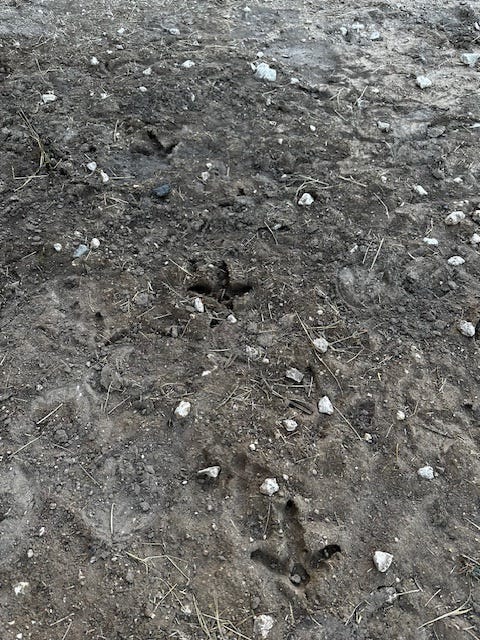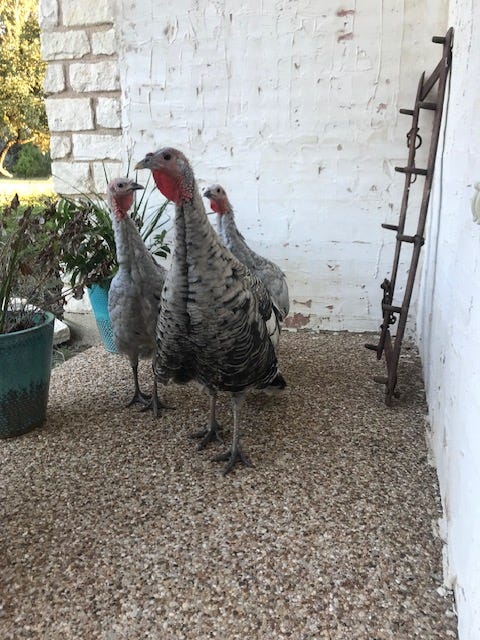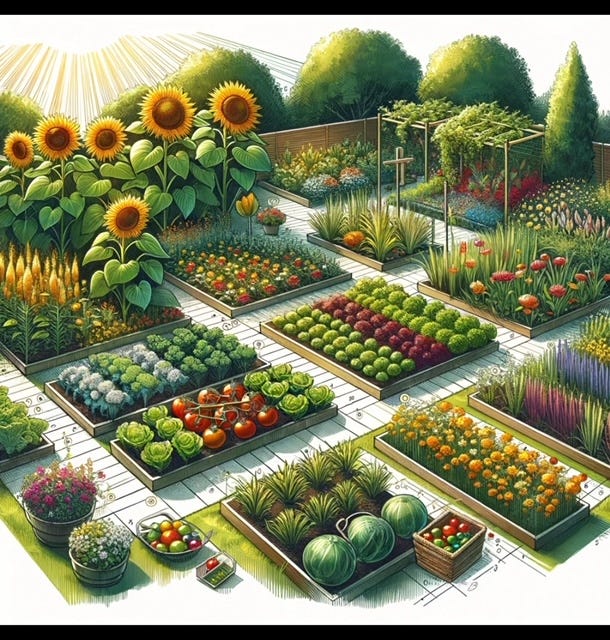Getting started
homesteading
Welcome to Growing the Flock Up! I hope you have made your way here because you’re interested in setting up a small homestead and are looking for advice…like I was when getting started. I hope you find the start of or exactly what you’re looking for and feel free to comment so we can both learn together.
Why Homesteading? I think there are a lot of broad and deep reasons that most of us will coincide on as far as why the drive and concept of homesteading are important and relevant in this time. Regardless of the size of your plot (more on that later), a notion of homesteading will only help you and yours. A homestead was a tract of land given to be worked so everyone could have “a fair chance”. In 1862, that was 160 acres (yowza) of federal land to help persons move into and tame the West. Nowadays, a homestead is considerably and usually less acreage and meant more for independence and sustenance than filling up wild zip codes. Homesteading means using your own resources masterfully (and mostly, creatively) to lessen your dependence on public systems, ensure food supply (at least, for your household) and ideally, create a surplus you can use to improve or build back into your homestead. While I tell you about our experience (I promise it’s relevant to yours), feel free to indulge your own creative process with notes, doodles, questions, etc. on how this could apply to or help you.
We have five acres in the Texas Westoplex, a land of brutal, dry summers and (thankfully) most mild winters with an occasional snowpocalypse thrown in. We have about .2 inches of soil…no, scratch that…clay followed up immediately by sheets of limestone that make digging for any reason a nightmare (so no T-posts, buried family pets, or heavy gardening). The great news is, if you don’t shatter your spine by attempting to dig or have access to heavy machinery, you can find a lot of neat fossils from when this area was muddy and walked across by dinosaurs (not a lot of money in that since most “fossils” now are made in China and were historically made by moonlighting moonshiners-it has a nice ring to it, doesn’t it?).
Meleagris gallopavo tracks in mud dating to the Springtaceous period.
Our place has a bunch of oaks (live? post? I’m still not sure, or we have a mix), cedars (those evil pollen-releasing haters), weird plants (milkweed-good or bad? pokeweed-good or bad? poison ivy-all bad) and a few critters outside of official flock members. The best critter I discovered lives here are Roadrunners. Beyond meep meep fame, these fascinating birds are members of the cuckoo family and eat a good amount of reptiles and snakes. If the babies can’t handle a particularly long snake at the time it’s fed, the remaining bit hangs out of their beak while the rest is being digested. This is good news for us as allegedly, copperheads are drawn to lay under oak trees where they are perfectly camouflaged to eat molting cicadas, a favorite snack of theirs. This past year we dispatch-err, rehomed four of them to a better place along with rat snakes that developed a taste for murdering ducklings.
So the first order of business for me as Flockherd was to find an animal that could eat bugs and weeds that was hardy. Chickens were a no-go (not hardy enough). So I settled on turkeys, aided by a lady that was selling a few for $18 each nearby. Over time and a lot of learning processes, I believe turkeys were a great choice for my situation, even as a novice. The ones I bought and brought home inside a mesh bag (our furniture had been delivered in it and worked well as long as they were kept semi-confined so their nails didn’t poke through) were heritage turkeys, the perfect intermediate between the wild, rangy turkeys and the mutant obscenities everyone gets at the supermarket. I confidently brought home a Bronze/Blue mix male and two Slate females that were roughly two-three months old. The interwebs warned that turkey poults (don’t call them turkey chicks in my vicinity) shouldn’t be “on the ground” until they were older since they are fragile. I kept them locked in a stall for a few days before allowing them to range in the pasture while I babysat and eventually left the door open as they would come out in the morning and return in the evening to roost on top of the stalls, or even on the barn roof itself. Word of warning…heritage turkeys can aim and fly quite well, and love roofs of things like cars and anyplace you don’t want them. I didn’t see much weed eating, but they work well for bugs, especially things like june beetles, crickets and locusts. Over time, I discovered that Bronze/Blue mix didn’t exist and wasn’t male, but that turkey hens can and will strut and even gobble (I have video proof along with lots of hunters on YouTube). More on all the turkey info you might want on my Turkeys post.
The turkey OGs hanging out on the porch looking like an album cover.
The second focus for us was to manage the greenery. The trees were all unwieldy and overgrown and the pasture was a solid knee high weed of inedible variety. “You should get a goat!” No - goats, just like our already existent horses, will only eat what they prefer and leave the rest unless they are tied or fenced to the area you want trimmed. We hired a tractor to come mow the pasture and haven’t needed to since. I have managed with our ride-on to keep the rock-free areas manageable and provide lower areas the horses prefer to graze in. The trees have slowly but surely over a few years been a source of fencewood, firewood and decorations. Pruning can only occur in the winter when the tree is dormant or in the case of dangerous or already dead branches.
So, where are you in your notes? What do you need to get started and how do you measure success?
The first step is inventory - what resources do you have right now? Only include the working and ready access resources (well, a run in shed could go here or eventually I’d like to fence this area…etc. count as expansions whereas faulty or unusable resources need to be fixed or gotten rid of before they can be included).
How much land/space do you have? This doesn’t need to be acreage and could even be your apartment roof or balcony if that’s all you can start with. The choices of what goes on there are dependent on this step and being realistic instead of dreaming.
Water will be your next critical resource to consider. Where does it come from (city, well, irrigation) and how is it accessed throughout your area or is it confined to one location you’ll have to work to expand (buckets, hoses). Hauling water to different areas has huge disadvantages, but is not impossible to deal with. Gardening will strain your water resources, so management is critical (timers, sprinklers, soakers, drought survivors, etc.).
Sunlight is also important, especially considering a smaller space available or for example, heavily wooded or shaded or not oriented adequately. Livestock will require shade as well as most productive plants.
On to livestock…your space will determine how many and what type of animals you can have, since many chickens can “fit” in the space one bull does, but there are other factors that come into play as well.
What do you need? Skills are a must, but I will say as a lifelong learner and bit of a maverick, don’t let the unknown be or remain ignorance. All living things have basic needs, but there is skill and art in developing them in a way that thrives. If you’re not sure or don’t know, ASK and TRY. This is where another necessity comes in - find a community. Human beings do not thrive or even survive alone, so find a community that has some similarities to you and your goals, but also have differing opinions and experiences to help you grow. Check the References part to see sites and apps that have been crucial to my development.
The nutshell: if you read nothing else, read this part: the thing you’ll need most of, is TIME. Time to plan and do research. Time to communicate and be active in your community[communities]. Time to allow your flock, herd and garden to grow. This is not a criticism on you, or a failing, despite how easy it is to think that. I wanted to get started and set up and be off running fast, but good things take time and every season will teach new things or cement old things. Always view time as a positive instead of criticizing yourself by comparing to others. Part of time management is to not add anything new or unproven to your dynamic more than once a year, depending on its size and impact. Chicken math is always acceptable at any point (the more, the fluffier!) whereas putting in a pond is an example of this. Big changes require more assessment and the ability to analyze (that worked, didn’t work, or could work with some tweaks).
Feel free to message me or comment if you want to share or get my input and Happy Homesteading!
References (not following any format, just in case you feel like fact checking and/or falling down any research rabbit holes!)
The history of the homestead and the Homestead Act https://www.nps.gov/home/learn/historyculture/index.htm#:~:text=The%20Homestead%20Act%20of%201862,woman%20a%20%22fair%20chance.%22
Rocks, tracks and caves in Central and South Texas https://en.wikipedia.org/wiki/Glen_Rose_Formation
Footprints and moonshine - just look up “The Alvis Delk print controversy”
The Livestock Conservancy protects breeds from extinction and provides comparison charts and breeder’s directory. https://livestockconservancy.org/about-us/
Backyard Chickens is an amazing forum, resource and community for all kinds of poultry, not just chickens. It has a search function that helps search diseases, genetics, sales, medications, incubating and beyond as well as some addicting photo contests.
Available as an app for phones, iNaturalist can identify plants, animals, insects, and mushrooms (with a caveat every time!) through photos or search and contributes to multiple research projects.
Images are AI generated for fun or my personal photos, unless credited or an internet meme designed to make you laugh.





